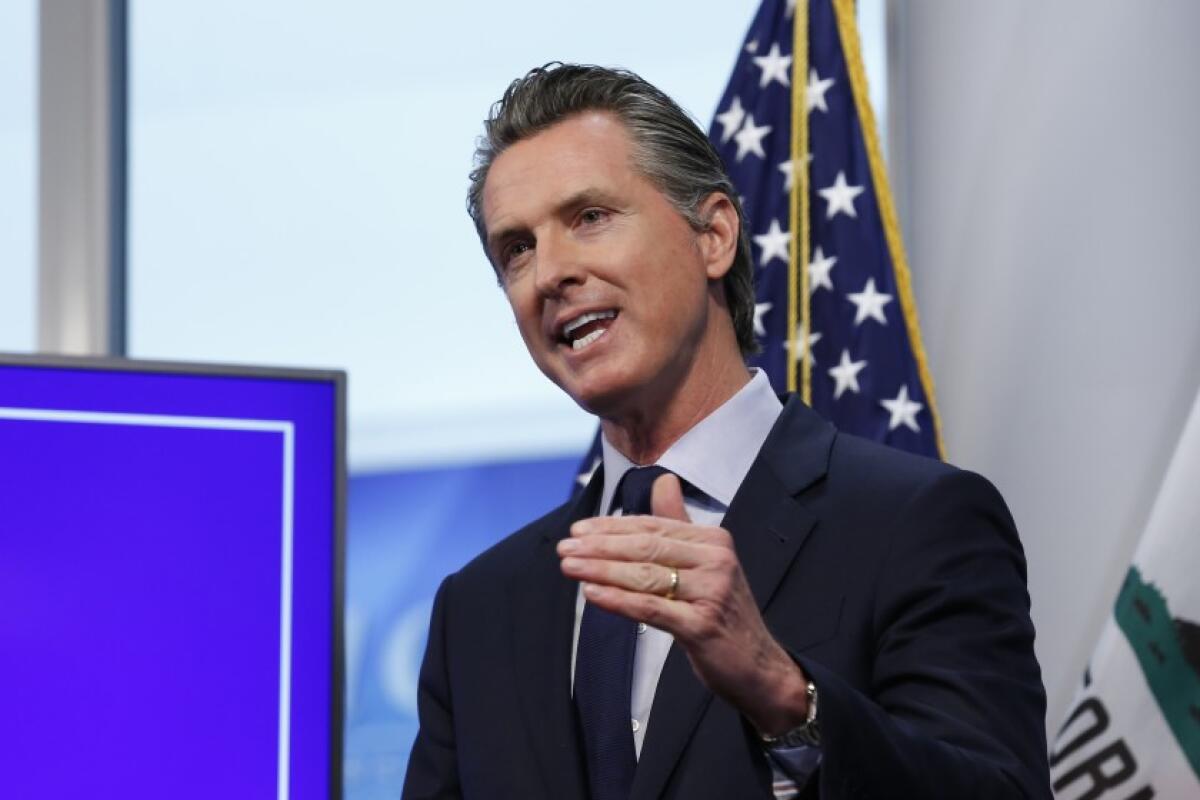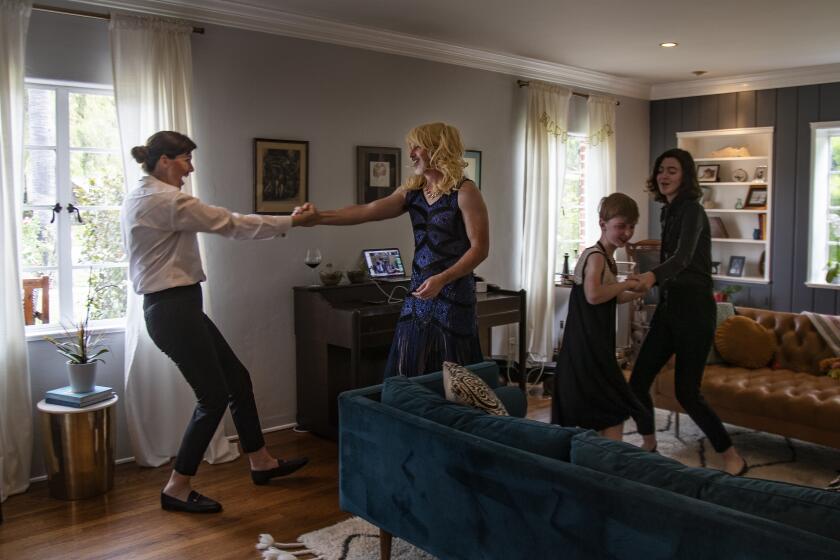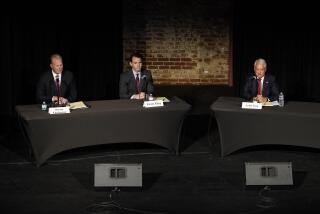Column: Reversing the shutdown is scary, but we have to start revising it

- Share via
The word “reopen” as applied to almost anything — doors, windows, bookstores — has acquired a touch of radioactivity in recent weeks. To talk of ending stay-at-home orders that have landed some 97% of Americans under house arrest is to risk getting lumped in with the red-hat nutters holding cuddle-party protests in a miasma of deadly microbes.
And yet it’s not humanly possible to repress all longing for the old life: graduation parties, baseball games. Sleep undisturbed by COVID-19 nightmares. Oh and there used to be paychecks? And toilet paper on Amazon?
California Gov. Gavin Newsom asked on Wednesday: “When can we go back to some semblance of normalcy?”
Hear, hear. But for fear of coming off like quacky Dr. Phil, a lot of us are keeping our cravings for ordinary life to ourselves.
Dancing at home during the shutdown is the coronavirus pandemic’s bathtub gin.
This is a shame. Pondering Newsom’s question is not the equivalent of denying science. And proposing modifications to quarantine measures is not like saying Jesus is your vaccine.
Even if government wanted to separate the economy from the pandemic, it wouldn’t be possible. The two are fatally intertwined, right down to undersupplied intensive care units and coffee shops with such tight margins that they can’t last a month if we’re too scared to brave a line for a cold brew.
We get this too: A shut-down economy is a public health risk.
It’s clear that a grand reopening of all sectors would require virus and immunity testing that’s invariably labeled “extensive.” Paul Romer, an economist and Nobel laureate, suggests that if we conducted 22 million tests a day, we could keep only infected people quarantined. For reference: The U.S. now performs around 146,000 tests a day.
And strategizing about reopening is admittedly challenging when there are credible warnings that lifting any of the current mitigation practices will lead to disaster. According to a new MIT preprint — that’s a paper awaiting peer review — “relaxing or reversing quarantine measures right now ... will lead to an exponential explosion in the infected case count.”
This study is authoritative, bracing and missing a few key details. What normal activities do the researchers consider lethal, and what qualifies as “relaxing or reversing” mitigation? Do they mean that a person quarantining alone should not expect to touch another human being for another six months? Or that colleges should commit to online classes until 2021? Or that if you’re masked and distant, you couldn’t shop for a new sweater in a store?
Perhaps, in such a charged atmosphere, with so much at risk, we need a word that isn’t “reopening.” Instead of even “relaxing” or “reversing” measures, maybe we could consider “revising” them.
What might prudent revisions look like?
Here’s one: Let non-COVID-19 patients back into hospitals for scheduled surgeries. On Wednesday, Newsom suggested just this, but with so much hesitation and doublespeak that he could hardly be understood.
“Based upon ... the incredible work that the hospitals have done to decompress their existing facilities and provide capacity to increase surge, and the incredible workforce that’s been assembled,” he said, “we are in a position to begin to pull back and lean in by beginning to schedule surgeries.”
Pull back and lean in. Oy. Newsom is as anxious about announcing a minor, life-saving revision of what’s going on at hospitals as he might be authorizing mask-free Coachella-scale bacchanals in every town in California.
But those aren’t the choices. We need nuance.
For example, most states have acknowledged they ought to expand the definition of “essential” so that more workers — some on the job anyway — can get emergency benefits. And it’s high time to permit women currently experiencing domestic violence to break quarantine norms and seek shelter away from their abusers.
And among the first places we should pull back and lean in is public school. The right of all American kids to a free education is not something we can sideline for much longer. Refusing to even talk about a real timeline for getting students back into classrooms ladles more trauma on kids and their families, who are already managing fear, uncertainty, claustrophobia, inadequate quarantines, sickness and online funerals.
Just as we concentrated resources to get ventilators to the most hard-hit hospitals, we need to aim our testing resources at schools to get them up and running as quickly and as rationally as possible. We need to revise the physical plants and the schedules, so that social distance is possible at school.
I’m not talking about — pondering — packing Petco Stadium for a Padres game. I’m talking about common-sense revisions to the quarantine that help the neediest cases, and thus help all of us.
No one should mix up rational revisions to quarantine measures with what the state of Georgia is up to, for example. Gov. Brian Kemp announced plans to reopen Georgia’s nail salons, barbershops, massage parlors, tattoo shops, restaurants and movie theaters in the next few days, without rescinding his own shutdown order or gathering local input. Kemp — whose career has been pocked with truly jaw-dropping controversies, including one involving donations from an iffy massage parlor chain — evidently didn’t look up “exponential explosion” before he decided nail art and back rubs were worth the confusion and the risks.
Revising current stay-at-home orders to better allocate resources is rational, and it’s a discussion we can’t back away from. Kemp, by contrast, is instituting a careless plan that endangers lives. The word for that is madness.
Twitter: @page88
More to Read
A cure for the common opinion
Get thought-provoking perspectives with our weekly newsletter.
You may occasionally receive promotional content from the Los Angeles Times.











